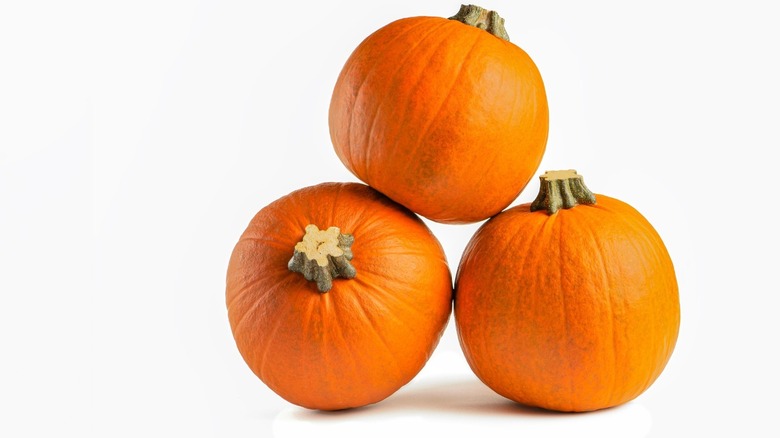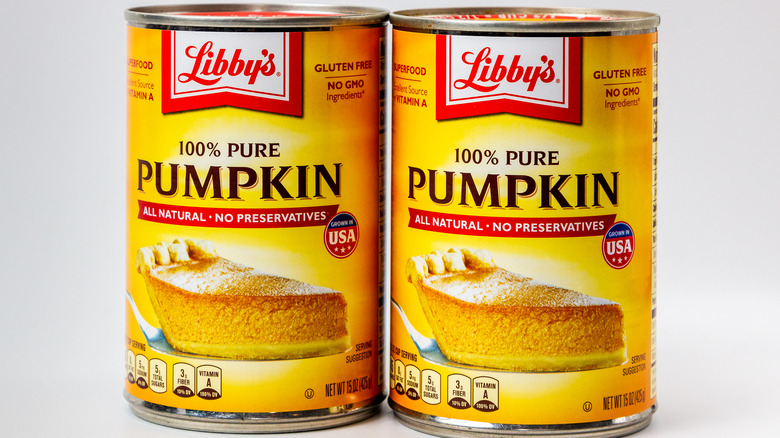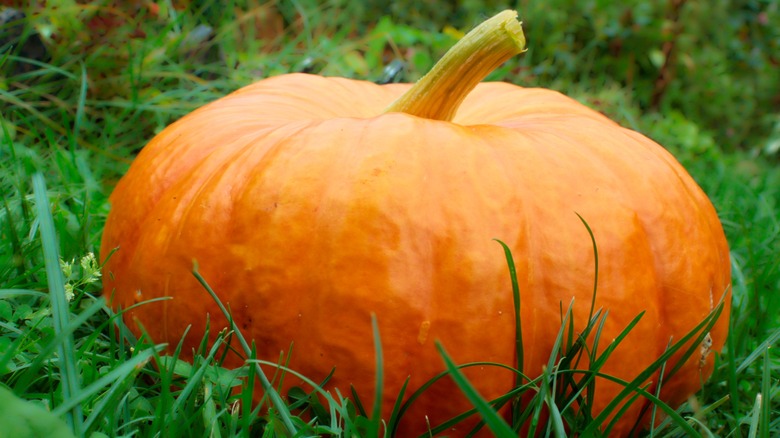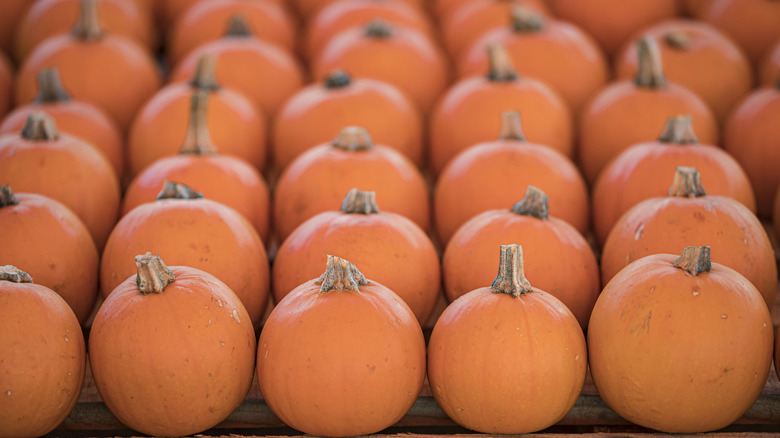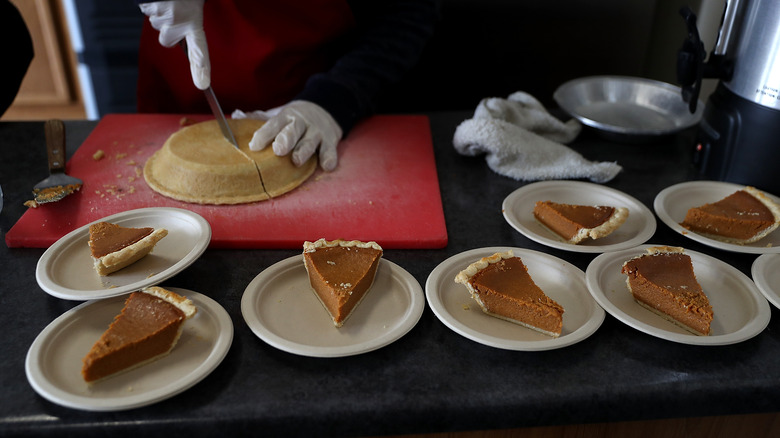Canned Pumpkin Vs Fresh Pumpkin: What's The Difference?
Pumpkin spice season is in full swing, if you couldn't tell by Starbucks and Aldi releasing their special collection of seasonal products for the fall.
You might also be in the mood to whip up some baked goods of your own. With the seasons changing and the weather getting cooler, spending more time in the kitchen is natural. And as we know, a fall recipe won't be complete without some cinnamon, nutmeg, and of course, some pumpkin.
With that being said, you might experience some level of dilemma deciding between the canned pumpkin and the fresh pumpkin the next time you're at Trader Joe's. Which one will work better in the pumpkin pie that will wow your guests' taste buds at Thanksgiving?
Well, have no fear, because we're going to give you the low-down of the similarities and differences between the two, what they're used for, and which one ultimately reigns supreme.
What types of pumpkin is canned pumpkin made from (and is it really pumpkin)?
Some canned pumpkin should actually be called squash puree, because they aren't completely made from the actual plant they are named after. According to Kitchn, these varieties are actually a combination of a variety of winter squash, which pumpkin is related to. These can include butternut, Hubbard, Boston Marrow, and Golden Delicious.
The reason for this is because these other species are sweeter and brighter in color than pumpkin itself, and are therefore more marketable to consumers who will buy cans in supermarkets. Little do these people know that what they're getting isn't 100% the bright, orange pumpkin displayed on the label.
However, according to Delish, some canned pumpkin is the "real stuff," and is often labeled as "pureed pumpkin," or "steamed pumpkin puree."
The homemade pumpkin puree that the Delish author uses contains a small sugar pumpkin that was roasted. This differs from the usual process of making canned pumpkin puree, which is usually steamed pumpkin, along with the various other types of squash we mentioned before.
Nutritional Differences
Pumpkin is known to be great for treating high blood pressure, controlling diabetes, and regulating heart health (via Medical News Today). So do its benefits still transfer over when it is packaged and canned?
We're usually taught that fresh foods have a higher nutritional content than canned varieties, but Mayo Clinic explains this is not fully the case with canned pumpkin, which also contains potassium, vitamin A, and iron.
What many people might be concerned about are the added sugars to canned foods. But according to Eat This, Not That!, canned pumpkin only contains four grams of sugar, so there really isn't a reason to steer clear of this variety if it is more convenient.
But if you're still bugged out by the packaged version, you can also make your own pumpkin puree from scratch, giving you control over the other spices and sugars that go into the dish.
Can you swap one for another? Would you need to tweak your recipe if you do?
According to Better Homes & Gardens, you can swap your canned pumpkin in 1:1 ratios in recipes. But of course, you will need to puree and drain a physical pumpkin before using it in recipes. As overwhelming as this might seem, Alton Brown (posted at Food Network) explains how this process only entails roasting a pumpkin, scooping out the flesh, and tossing it in your food processor. Voila! You now have homemade pumpkin puree.
However, canned pumpkin is generally considered to be better for pies. Taste of Home conducted a taste test of the classic pumpkin pie, noting that the canned pumpkin version was silkier and more pronounced in taste. But if you're looking for more of a pumpkin spice taste, opt for the fresh pumpkin. Delish also notes that a pumpkin bread recipe made with canned pumpkin was almost fluffier and darker than one that was made with fresh pumpkin. Nonetheless, you can't go wrong with using either variety.
Recipes that use both
Once you've pureed and drained your fresh pumpkin, you can pretty much swap it for canned pumpkin in any recipe of your choice. Just do whatever's most convenient and affordable for you, in terms of money and time. The end result won't be too astronomically different between the two. Of course, we suggest creating the classic pumpkin pie, but a recipe for pumpkin bread will result in something autumn-centric as well. Try bringing that to the holiday gathering this year, and your family members won't even complain that you left the pie out of the equation.
You can also use pumpkin in your oatmeal and smoothies. That's right: All you need to do is take your pumpkin puree, whether canned or fresh, and add it into your breakfast in the desired number of spoonfuls. That's what we call fall in a dish.
What if you are team sweet over savory? You can also use pumpkin puree in risotto (via Full of Plants).
